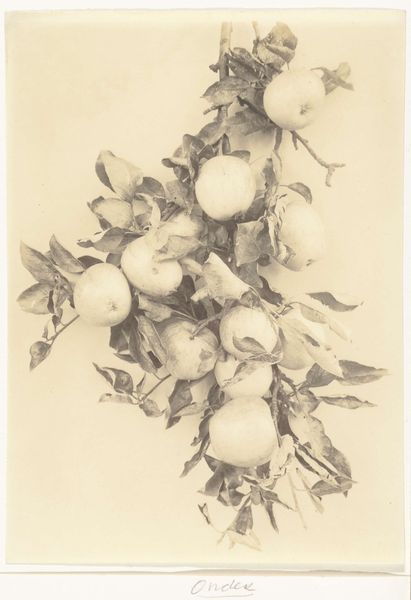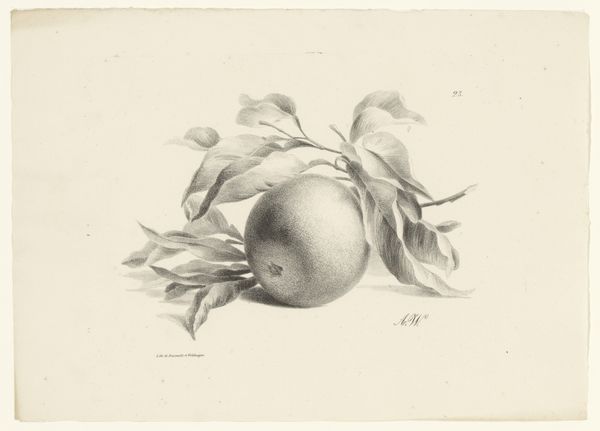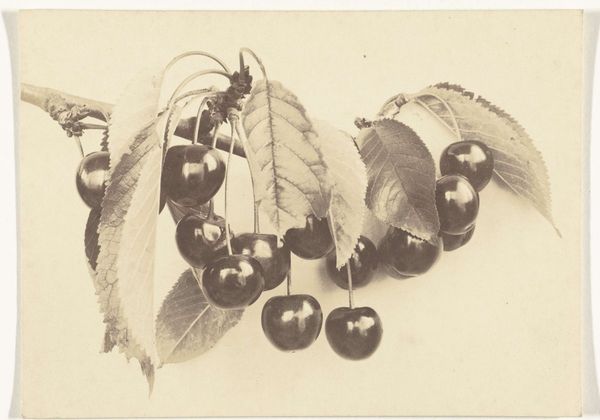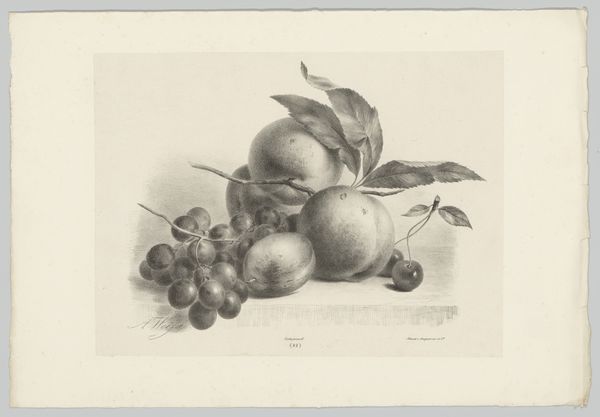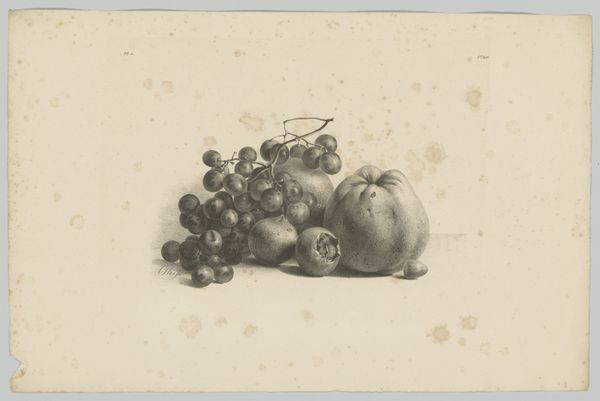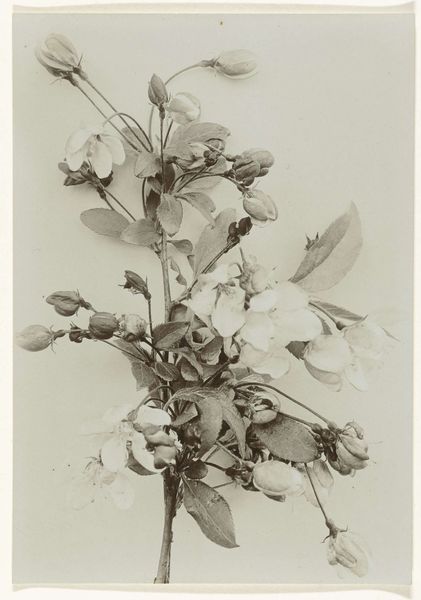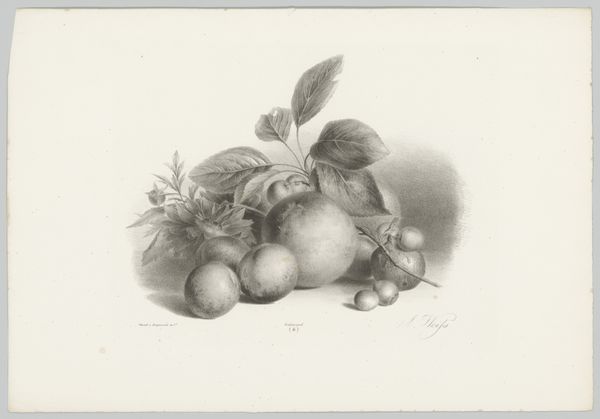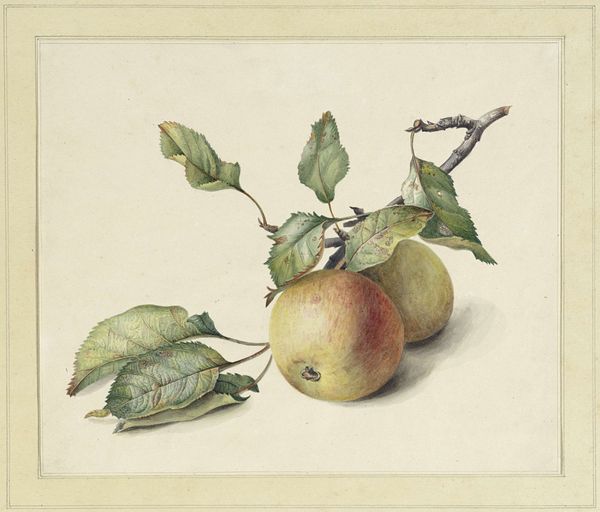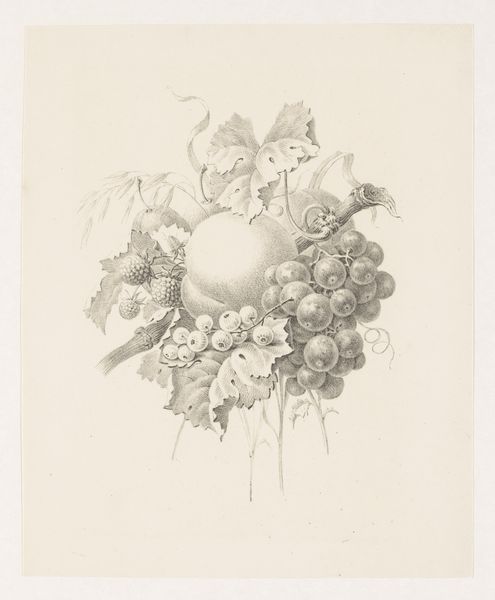
photography
#
still-life-photography
#
photography
#
fruit
#
fruit
#
botanical art
#
realism
Dimensions: height 226 mm, width 163 mm
Copyright: Rijks Museum: Open Domain
Editor: Here we have Richard Tepe's "Tak met appels," or "Branch with Apples," a photograph created sometime between 1900 and 1930, now held at the Rijksmuseum. I’m immediately struck by the soft, almost dreamlike quality of the image, and the stark presentation of these everyday objects as art. What do you make of this composition, Professor? Curator: Well, what stands out for me is that even within the still-life genre, which has a long history of symbolic representation, this image offers an interesting lens into the domestic culture of its time. These aren't glamorous, staged objects, but rather a simple branch of apples, captured directly. It feels unmediated, almost scientific in its observation. Considering the rise of photography at the time, how might this image reflect or perhaps challenge traditional painting conventions? Editor: That's interesting. It almost feels like a democratizing of art, taking it out of the grand salon and putting it into the home. Is there a particular audience you think Tepe might have been trying to reach? Curator: Precisely. Photography was becoming increasingly accessible, and images like this spoke to a middle-class audience eager to engage with art in new ways. The emphasis on realism aligns with a growing interest in capturing everyday life. It moves away from purely allegorical representation towards a form that highlights the beauty inherent in ordinary subjects. How do you think its placement in the Rijksmuseum, today, changes the significance of the work? Editor: That's a great point! Placing it in a museum context elevates the status, maybe giving the everyday a sense of historical importance. This makes me think differently about how we decide what gets preserved. Curator: Exactly. The institutional validation shapes our perception of its worth. It speaks volumes about changing societal values and how art history gets constructed. Thank you, I hadn't considered how that dynamic is crucial to this artist.
Comments
No comments
Be the first to comment and join the conversation on the ultimate creative platform.


